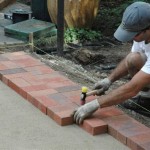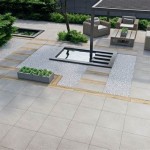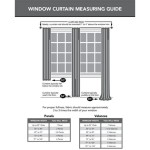Build Your Own Patio Chairs
Building patio furniture offers a rewarding opportunity to customize outdoor spaces while potentially saving money. Constructing chairs, in particular, allows for tailoring designs to specific needs and aesthetic preferences. This article will guide readers through key considerations and steps involved in building their own patio chairs.
Choosing the Right Materials
Material selection is crucial for durability, aesthetics, and maintenance. Wood, metal, and plastic are common choices, each possessing unique advantages and disadvantages. Wood offers a classic look and can be easily worked with, but requires regular sealing and staining to protect against the elements. Cedar, redwood, and teak are popular choices due to their natural resistance to rot and insects. Metal provides strength and longevity, especially aluminum and wrought iron, but can be more challenging to work with and may require welding skills. Plastic furniture is lightweight and weather-resistant, but can be less aesthetically pleasing and prone to fading or cracking over time. Careful consideration of the intended environment and desired aesthetic will inform the optimal material choice.
Planning and Design
Before purchasing materials, a detailed plan is essential. Free plans are available online and in woodworking magazines, or one can create a custom design. The plan should specify dimensions, materials, required tools, and assembly instructions. Sketching the design beforehand, including accurate measurements, can help visualize the finished product and ensure proper proportions. Consider the intended users and their comfort when determining seat height, back angle, and armrest placement. Planning also involves assessing the available tools and potentially acquiring any necessary equipment.
Essential Tools and Equipment
The required tools will vary depending on the chosen material and design complexity. For woodworking projects, essential tools include a saw (circular saw, jigsaw, or handsaw), drill, screwdriver, measuring tape, and sandpaper. Metalworking projects may require a welder, metal grinder, and specific cutting tools. Safety equipment such as safety glasses, gloves, and hearing protection are crucial regardless of the chosen material. Having the necessary tools readily available before starting the project will streamline the building process and minimize potential delays.
Step-by-Step Construction
The construction process should follow the chosen plan meticulously. Begin by cutting the materials to the specified dimensions. Accuracy in this stage is vital to ensure proper assembly and structural integrity. Next, assemble the chair frame, ensuring all joints are secure and aligned correctly. Woodworking projects typically involve using screws, nails, or wood glue, while metal projects might require welding or bolting components together. Once the frame is complete, attach the seat and backrest, ensuring they are firmly affixed and comfortable. Finally, sand any rough edges and apply a protective finish if necessary.
Finishing Touches
After the chair is assembled, finishing touches can enhance its appearance and durability. Sanding smooths any rough edges and prepares the surface for finishing. Wood furniture benefits from staining or painting to protect it from weather and enhance its aesthetic appeal. Metal furniture can be powder-coated for increased durability and corrosion resistance. Adding cushions and pillows not only enhances comfort but also adds a decorative element. Regular maintenance, such as cleaning and reapplying protective finishes, will prolong the life of the patio chairs.
Customization and Variations
Building patio chairs offers ample opportunities for customization. Consider adding features like cup holders, built-in storage, or adjustable backrests. Experiment with different materials for the seat and backrest, such as woven rope, canvas, or outdoor fabric. Adding decorative elements like carved details or metal accents can personalize the design further. Explore different chair styles, such as Adirondack chairs, rocking chairs, or folding chairs, to suit individual preferences and needs.
Safety Considerations
Prioritizing safety throughout the building process is paramount. Always wear appropriate safety gear, including eye protection, gloves, and hearing protection when using power tools. Follow manufacturer instructions for all tools and equipment. Ensure the work area is well-ventilated and free of clutter. When working with wood, be mindful of splinters and sharp edges. When working with metal, take precautions to avoid burns and cuts. Dispose of waste materials properly and responsibly.

Diy Patio Chair Plan Outdoor Plans Build Your Own
:max_bytes(150000):strip_icc()/cherishedbliss-dcb2c5e4a8c64c12b0b16e85c88a22bd.jpg?strip=all)
23 Diy Patio Furniture Plans
:max_bytes(150000):strip_icc()/homemadebycarmona-386463f43539452b8b033a4108701959.jpg?strip=all)
23 Diy Patio Furniture Plans

Diy Double Chair Projects With Pete

Modern Outdoor Chair From 2x4s And 2x6s Ana White

Diy Patio Chair Plans And Tutorial Step By S Photos Chairs Wooden Furniture Wood

30 Easy Diy Chairs How To Build A Chair At Home

25 Free Diy Chaise Lounge Plans With Easy Instructions Outdoor Chair Furniture

Diy Modern Outdoor Chair Building Plans And Tutorial

Diy Modern Outdoor Chairs House On Longwood Lane
Related Posts








